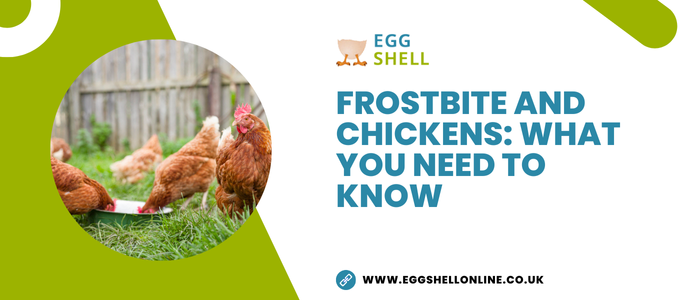Chickens are known to be very hardy and able to put up with cold conditions, but this does not mean there is no risk during the winter months. Chickens can and do suffer from frostbite if they are not given the right conditions to help keep them warm and dry.
When chickens suffer from frostbite, they can experience damage to their bodily tissue when the fluid in the cells freezes. This results in clotting of the blood to respond to the damage and this deprives the cells of oxygen.
The tissue will turn black, which means that it is dead and will not grow back. It typically takes a few weeks for chickens to recover from frostbite. The biggest risk would be secondary infection if their pen mates are able to peck at the affected areas.
While chickens can typically cope with extreme temperatures, it is still important for owners to be aware of the risks so they can act quickly at the first sign of an issue. Here are some of the best ways to treat frostbite in chickens:
Slowly warm the chickens
If you suspect your chickens are suffering from frostbite or at risk of frostbite, start by slowly warming the chickens to prevent damage. The key is to slowly warm them and avoid heat sources like a heat lamp, heater or blow dryer.
Simply moving your chickens to a warm room will allow them to slowly increase their temperature. If the feet are affected, allowing them to wade in warm (not hot) water will help to increase temperature and circulation.
Stop repeat occurrences
If your chickens have been affected in the past, they need to be protected from future instances of freezing weather. Areas that are damaged by frostbite will be more likely to suffer again in the future. To protect your chickens, you might consider moving the coop to a more sheltered area or adding additional insulation.
How to prevent frostbite in chickens
As with most conditions, prevention is better than cure. While most chickens are able to withstand even the coldest winter conditions, there are still occasions where it could get too cold for chickens to handle. This is when their owners can step in with a little extra protection.
- Choose chickens accustomed to cold
If you live in an area where the temperature regularly drops below freezing, it’s a good idea to choose chickens that are accustomed to the cold. Some examples of birds that thrive in the cold include Olive Eggers, Plymouth Rocks, Rhode Island Red, and the Speckled Sussex. Ex commercial hens are accustomed to indoor heaters and might not be ready for a cold winter, so if you have rescued your hens, be prepared to provide extra support if the temperature gets too cold.
- Insulate your chicken coops
The next step is to make sure your chicken coops are up to the task. Insulation is not just in the roof but also between the ground and the coop floor. Raising your roosts will help to keep chickens warm and healthy. You can also add additional sawdust and hay during winter months to help with insulation.
- Address ventilation
A hidden danger when it comes to cold weather is the risk of moisture build up. If your chicken coops lack proper ventilation, they could become damp, which will make the cold feel more extreme. Ventilation will help to keep the space warm and dry. This is another argument for raising the roosts off the floor to help with air circulation. You can also use windows or wall vents to help keep the air moving.

